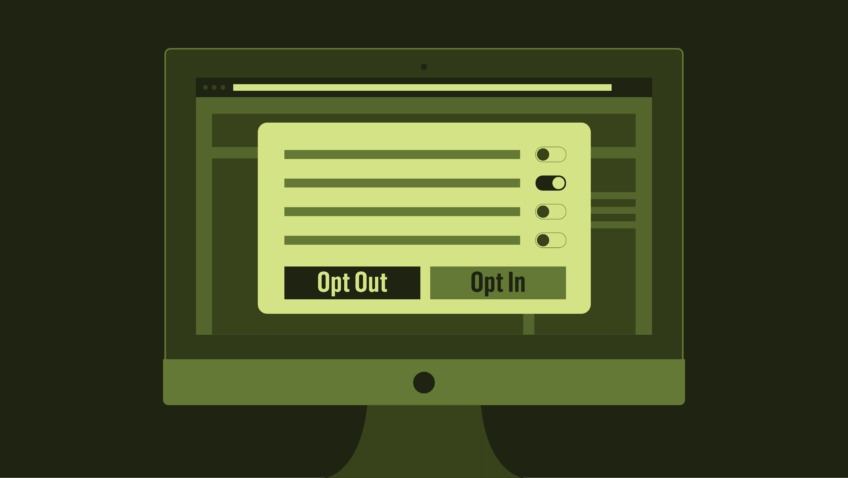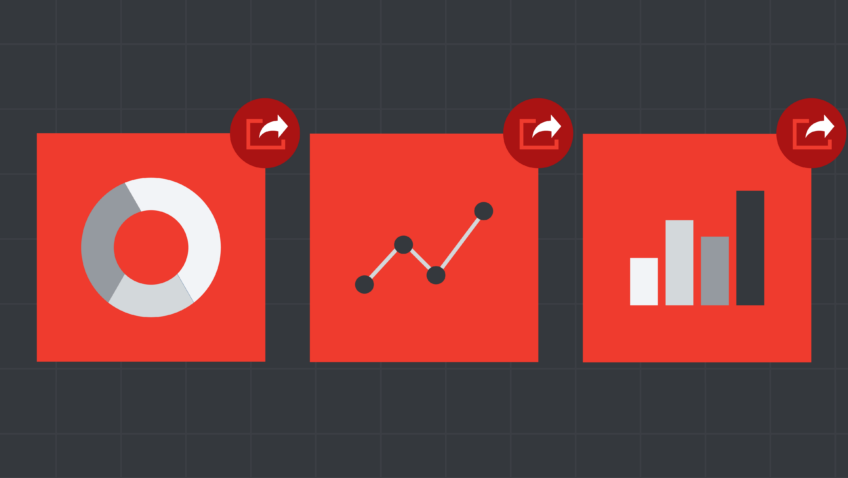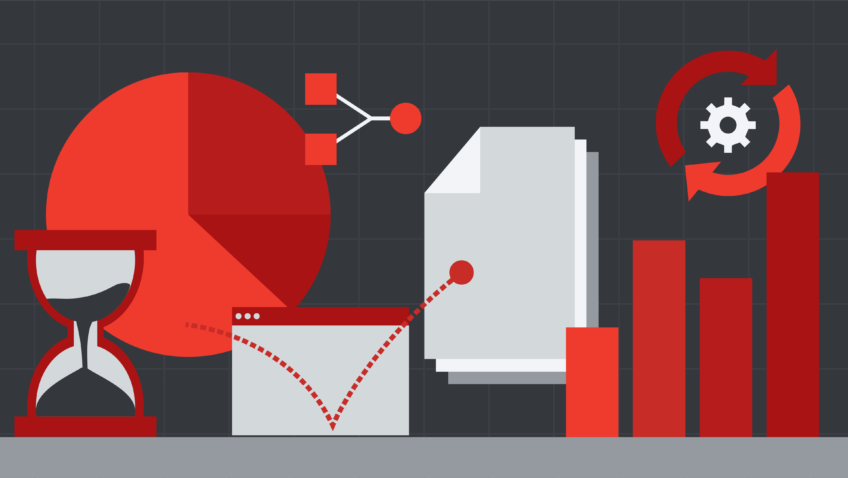Advice for Managing a Website Redesign
Ask the Industry
Ask the Industry features advice from arts marketers in their own words. We hope you can learn from them and it will spark new ideas at your organization.
This month, we’re asking, “What advice would you give to a fellow arts marketer before embarking on a website redesign project?”
Jonathan Carpenter and Jack Wright (Celebrity Series of Boston), Nora Brady (Los Angeles Philharmonic), and Rosemary Devine and Tori Harvey (People’s Light) highlight their most recent website redesigns, and answer everything from choosing a project manager, to their biggest successes and most valuable learnings.
Tell us about your most recent website redesign. How long had it been since your last redesign? What were some pain points on the original site you wanted to improve?
Jonathan Carpenter (Celebrity Series of Boston): I’ve been with the Celebrity Series for about 4 years, and we had the same site design as long as I’ve been here.
Jack Wright (Celebrity Series of Boston): We had never done a redesign on this scale. We had changed the look of the site numerous times, but we were still operating in a hard HTML environment – no CMS, no mobile site. It’s fair to say this was our first redesign.
Jonathan Carpenter (Celebrity Series of Boston): The original site left a lot to be desired. Our two-column design worked well for us from a page layout perspective, since we were able to pack a lot of information into a small space. Building a mobile-first site was a big priority for us. Jack also mentioned that we didn’t have a content management system on our old site. When we had to make updates, someone had to log into Dreamweaver. We had only a few staff members with that skill set, and it led to a very inefficient, time-consuming process to keep the site current. Implementing a CMS was another major priority. Also, since it was so long since we had done a redesign, we simply wanted to build a site with a more current design that represented our organization in a more contemporary way.
Rosemary Devine and Tori Harvey (People’s Light): The last redesign for People’s Light was about seven or eight years ago. Not only did our previous site look a bit outdated, but the back-end was also increasingly difficult to manage. We specifically wanted to improve the site navigation. We have a lot going on at People’s Light, which is fantastic but can be difficult to communicate on the web effectively. There were too many pages and lots of repetitive content. Additionally, our website was not mobile friendly, and if our friends at Capacity Interactive have taught us anything, it’s the value of a mobile-friendly website!
In January 2018, we launched a beautiful new website designed by Karma Agency in Philadelphia, who came highly recommended. The entire process took about a year and occurred in tandem with a People’s Light rebranding project, also with Karma. It was important for us to go with a local company who would be able to meet us in person, tour our campus, and really get to know us. We held in-person workshops with Karma and provided them with data, market research, samples of our promotional pieces, and lots of reading material. This initial “discovery phase” set us up for success and ensured that the website would meet not only our technical needs but also truly reflect our personality and programming.
In the spirit of transparency, we should tell you that this was our second attempt at redesigning our website. Several months before our work with Karma, we began the process with a different company that wasn’t local, and inevitably parted ways because it wasn’t a good fit. We learned A LOT from this unsuccessful attempt (more on that later), and those lessons informed our communications with Karma.
Nora Brady (Los Angeles Philharmonic): Our sites had not been redesigned in over eight years and felt misaligned with our brand. The Los Angeles Philharmonic Association was planning for its centennial season in 2018/19, and this moment in our history provided an opportunity to redefine and reface our online experience.
Aside from this, the websites triggered some pain points—for both internal and external users: Audiences didn’t know the LA Phil (notably the Hollywood Bowl) was a non-profit, and the websites were confusing to navigate and needed improved user experience, as well as an improved content strategy. They also looked outdated and didn’t align with the LA Phil’s artistic content, and they were difficult to manage due to a laborious backend structure.
How did you make a case for this project? Especially considering the budget and staff time lift it would take.
Jack Wright (Celebrity Series of Boston): We were aided in making our case by the volume of issues we had lived with for so long, most notably our CMS and mobile status. These were relatively easy needs for stakeholders to understand. There was also a desire to keep up with the industry, or at least our small portion of it. This was probably the most significant driver from an executive standpoint. Of course, CMS and responsive design are both parts of that equation.
We were aided in making our case by the volume of issues we had lived with for so long, most notably our CMS and mobile status. These were relatively easy needs to for stakeholders to understand.
–Jack Wright, Celebrity Series
Nora Brady (Los Angeles Philharmonic): It was a cornerstone of our Centennial plans and budget. As the LA Phil looked ahead to its next 100 years, our websites needed to reflect that vision.
Did you have an internal or external project manager? How did you come to this decision?
Rosemary Devine and Tori Harvey (People’s Light): Our first website redesign experience (the one that didn’t work out) taught us the necessity of a project manager. Disseminating updates, gathering feedback, and channeling communication between our staff and the web designers, all while keeping up with the day-to-day workload, was incredibly challenging for a full-time employee. When we decided to start fresh with a different agency, we knew that having a focused, centralized coordinator would be integral to the project’s success. We brought on a member of our resident company of theatre artists as project manager to keep us on track throughout the process. She had the benefit of many years of institutional knowledge without the constraints of being a full-time admin staff member.
Jack Wright (Celebrity Series of Boston): We had a natural candidate to project manage, both in terms of willingness and ability. Because of his skill set and ability to comprehend and manage the internal dialogues, we never really considered an outside project manager, even though there was some opportunity cost associated with diverting that much of one person’s time.
Jonathan Carpenter (Celebrity Series of Boston): I was excited about managing the project for the Celebrity Series, and it seemed like I would have the time to accommodate the workload. We certainly considered the challenges that might arise from spending so much time on one project, but fortunately, the nature of my position allowed me to focus intensively on one project at a time. In our early conversations, it also seemed prudent to keep project management in-house based on our organizational needs. Since we had never been through this sort of process, there were many considerations to keep track of, and a lot of organizational nuances that we needed to make sure were not lost in the shuffle. Since representing the entirety of our ever-evolving organization was a priority, it felt like a good fit to have an internal project manager that had been with the company for several years. I think it would have been a challenge to arm an external project manager with the level of history and minutiae that this project required.
Nora Brady (Los Angeles Philharmonic): We had both a client side and agency side producer/project manager. The client-side producer helped craft the overall strategy and delivery through defining business and customer experience requirements with key stakeholders across the organization. The agency-side producer was the technical lead who oversaw product development and creative execution across the developer’s integrated project team and ensured quality deliverables. Both interfaced daily and served as a needed buffer between the business stakeholders and creative resources.
How did you manage internal stakeholders? Did you have a particular process that kept them involved while simultaneously moving the project forward?
Nora Brady (Los Angeles Philharmonic): As with most large, somewhat siloed organizations, it was critical that all felt engaged—not only for them but us as well. We were on a very ambitious delivery timeline and could not afford delays. Here are two things we did to maximize stakeholder engagement: Involve everyone at the beginning. We emphasized joint ownership and had a series of kickoff meetings. Understanding the specific pain points from all stakeholders helped in our requirements-building process. Facilitate cross-functional strategy sessions. To help break down silos, our strategy sessions became less department specific and more cross-functional. This allowed for all expertise and perspectives to be directly represented—and, for decisions to be made more
Rosemary Devine and Tori Harvey (People’s Light): Having a project manager was key! She kept everyone on the same page, managed deadlines, and served as the go-between in our communications with Karma.
It was important to identify the points throughout the process when everyone needed to be involved and when to distill down to a few key staff members. Copywriting and content gathering is a heavy lift for one department, so divvying that up was helpful. However, we made sure that only the Marketing team edited in the final stages, to ensure consistency. It can’t be 100% collaborative 100% of the time.
Jonathan Carpenter (Celebrity Series of Boston): We kept our staff involved at almost every step of the way. Generally speaking, whenever we received a new deliverable from Fastspot, our design partners, the project team (i.e., Jack and I) completed an initial round of feedback. Then, we’d go to our Senior Staff for the second round of feedback. We were constantly evaluating who needed to see particular deliverables, and I would say that we erred on the side of sharing as much as possible to keep everyone in the loop. I set very strict deadlines for feedback, and I frequently built in a day or two for feedback to trickle in past the deadline. It helped that our Executive Director told our staff at the outset that the project wouldn’t wait for them! If they missed a deadline, then they missed a deadline, and they would have to live with that outcome. That message helped everyone to treat the project with a sense of urgency that was necessary, especially when would sometimes only have a day or two to turn around feedback.
Someone absolutely must own the redesign project. Everyday business will make it so that the redesign is not the top priority for most staff members. You need someone who is able to sound the alarm and make the project a priority to stay on schedule.
— Jonathan Carpenter, Celebrity Series
Jack Wright (Celebrity Series of Boston): We met with board members just after the first design reveal and presented the full state of design to that point. We also reported to them on the RFP process earlier. Their response was a good bellwether of how much acceptance/resistance we could expect. In general, the news was good.
Did you include a maintenance budget so you could iteratively optimize your site moving forward?
Rosemary Devine and Tori Harvey (People’s Light): Yes, we moved our marketing budget around so that we’d be able to work with Capacity Interactive on a Google Analytics implementation for the new site, which will help with optimization going forward. We do plan to set aside a maintenance budget, but probably not for another year.
Jack Wright (Celebrity Series of Boston): We are in the process of addressing that now. While it is not proving to be a major obstacle, it may be wise for others to tackle it earlier than we did.
Nora Brady (Los Angeles Philharmonic): Yes, however, continued evaluation is needed. After conducting our initial usability testing, we will reassess our roadmap and maintenance budget requirements. Our goal is to adapt our online customer experience continually.
What were some of your biggest successes?
Jonathan Carpenter (Celebrity Series of Boston): I think the overall design was a big win. Fastspot did an excellent job of learning about our organization and coming up with a design aesthetic that encompasses our whole organization. I’m also so happy that with the launch of the new site and the arrival of TNEW V7, we now have a fully responsive website, from home page through order confirmation! I consider that a big success.
Jack Wright (Celebrity Series of Boston): We actually launched before a critical on sale despite a shortened schedule. The site now reflects a new, more holistic view of the organization and sets us up for growth in line with emerging strategies.
Rosemary Devine and Tori Harvey (People’s Light): In addition to a gorgeous new site, Karma Agency worked with us on our brand identity. Developing these two elements simultaneously with one company cut down on a lot of repetitive work. They “got” us from the beginning.
One big takeaway: this was a team effort. Representatives from multiple departments were involved in copywriting, editing, photo gathering, and brainstorming. As we approached the finish line, Marketing took the reins to ensure consistency, handle technical setbacks (which will occur), and get acquainted with our new site. But, the process overall was very collaborative.
Nora Brady (Los Angeles Philharmonic): Our website was designed from a mobile-first perspective, and our mobile users and conversion rates have increased by an average of 9%. We also implemented a “round up” donation feature which has increased our website donations by over 500%.
What were some of your most valuable learnings?
Rosemary Devine and Tori Harvey (People’s Light): We learned a lot about our brand voice while doing this project. Analyzing everything we do as an organization was a rigorous process, but so helpful in the end. It clarified priorities, and we were able to trim the fat. Our entire approach to copywriting and digital storytelling has shifted, and we’re not as precious about things anymore. This process forced us to learn adaptability.
Being organized is critical, not only for the redesign process but also for upkeep and site management. It’s like you don’t realize how messy your house has gotten until you visit a tidy friend, you know? Having a fresh, uncluttered site is energizing, whereas the old one had become an actual emotional drain. We didn’t want to clean house because it just felt impossible and didn’t know where to start.
Analyzing everything we do as an organization was a rigorous process, but so helpful in the end. Our entire approach to copywriting and digital storytelling shifted, and we’re not as precious anymore. This process forced us to lear adaptability.
–People’s Light
Nora Brady (Los Angeles Philharmonic): Maintaining engagement is critical. When stakeholders are engaged, it builds confidence, trust, and responsiveness. In return, that feedback helps to drive progress and reduce stress. Slow down and think before you do. It’s important to implement what is right for your organization and not what’s easy or fast. With tight deadlines, this will be tested but is critical to producing the best site for your needs. Finally, set realistic expectations. No matter how much planning goes into a project, the events are often unpredictable. To help manage this, set realistic expectations. Understand how long it takes your organization to make decisions, plan accordingly, and know that everyone will not see eye to eye and plan for that conflict.
Jonathan Carpenter (Celebrity Series of Boston): Someone absolutely must own the redesign project. Everyday business will make it so that the redesign is not the top priority for most staff members. You need someone who can sound the alarm and make the project a priority to stay on schedule.
Jack Wright (Celebrity Series of Boston): The value of giving oneself more time than seems necessary or even reasonable to complete the project. Beware of launch dates from any third parties on your site.
Jonathan Carpenter (Celebrity Series of Boston): Yes, allow more time than you think you’ll need, especially for content migration, and ask for all hands on deck for assistance when you need it. Even if you think that content migration will be a cut and dried process, you’ll be learning a new content management system or grappling with the constraints of a new design. It will take you longer than you’re expecting.
You won’t know the answer to everything, and that’s ok. Sometimes, you won’t be able to answer a question that comes up during discovery until after the site is live. Make sure that you have a detail-oriented person who can keep track of those questions, so they don’t get lost in the shuffle. And do your best to let your colleagues know that sometimes they may have to live with a bit of uncertainty.
If you could give a fellow arts marketer advice on website redesign projects in 1-2 sentences, what would it be?
Jonathan Carpenter (Celebrity Series of Boston): Be thoughtful, precise, and realistic; a project with a few well-articulated and attainable goals is much more likely to succeed. And communicate, communicate, communicate!
Nora Brady (Los Angeles Philharmonic): Communicate the heart of your organization inclusive of all departments, create a bold design, and ensure a seamless user experience. Bland designs won’t be remembered and functional errors will.
Bland designs won’t be remembered and functional errors will.
— Nora Brady, Los Angeles Philharmonic
Rosemary Devine and Tori Harvey (People’s Light): A new website is an investment, so choose your design firm wisely. Look for a company with experience working with similar organizations to yours, preferably local. We learned the hard way that you won’t have a positive experience if you’re not willing to spend the money on a highly regarded firm. It’s critical to involve the staff who will be managing the website on a daily basis, and in general, to have a firm understanding of the needs every department in your organization has for digital communication. Ask your web developers all the questions you can think of, but make sure there is someone in the room who knows what technical questions to ask! It’s easy to get hung up on the imagery and copy, but that’s also the easiest thing to change about a website. Make sure the basic functionality is what you need.
Can’t get enough website redesign management advice? Check out Preparing for Your Website Redesign at Digital Marketing Boot Camp for the Arts 2018.










